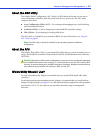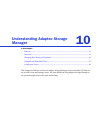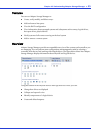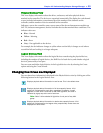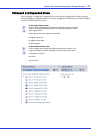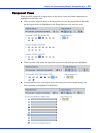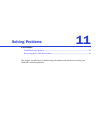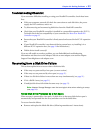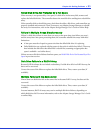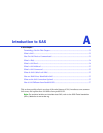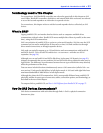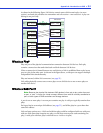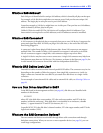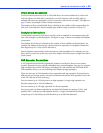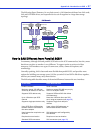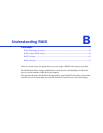
Chapter 11: Solving Problems ● 51
Failed Disk Drive Not Protected by a Hot Spare
When an array is not protected by a hot spare, if a disk drive in that array fails, remove and
replace the failed disk drive. The controller detects the new disk drive and begins to rebuild the
array.
If the controller fails to rebuild the array, check that the cables, disk drives, and controllers are
properly installed and connected. Then, if necessary, use Adaptec Storage Manager to rebuild
the array. For instructions, refer to the Adaptec Storage Manager User’s Guide or online Help.
Failure in Multiple Arrays Simultaneously
If there’s a disk drive failure in more than one array at the same time (one failure per array),
and the arrays have hot spares protecting them, the controller rebuilds the arrays with these
limitations:
● A hot spare must be of equal or greater size than the failed disk drive it’s replacing.
● Failed disk drives are replaced with hot spares in the order in which they failed. (The array
that includes the disk drive that failed first is rebuilt first, assuming an appropriate hot
spare is available—see bullet above.)
If there are more disk drive failures than hot spares, see Failed Disk Drive Not Protected by a Hot
Spare in previous section.
Disk Drive Failure in a RAID 0 Array
Because RAID 0 volumes do not include redundancy, if a disk drive fails in a RAID 0 array, the
data can’t be recovered.
Correct the cause of the failure or replace the failed disk drives. Then, restore your data (if
available).
Multiple Failures in the Same Array
If more than one disk drive fails at the same time in the same RAID 1 array, the data can’t be
recovered.
Correct the cause of the failure or replace the failed disk drives. Then, restore your data (if
available).
In some instances, RAID 10 arrays may survive multiple disk drive failures, depending on
which disk drives fail. For more information, refer to the Adaptec Storage Manager User’s Guide
or online Help.



